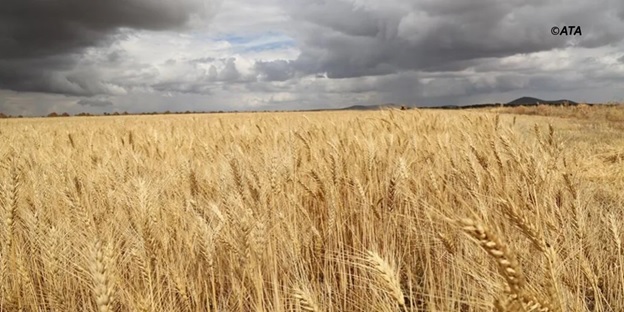
BY MENGISTEAB TESHOME
The population in need of humanitarian food assistance in Ethiopia has reached to the record levels in 2022 – 10 to 15 million-driven by ongoing insecurity and climate shocks that are likely to result in continued high demand into 2023.
In northern Ethiopia, where large-scale conflict significantly damaged livelihoods and made the emergency aid supply very difficult as the result, roughly two-thirds of the population left vulnerable to socio economic ills. In southern and southeastern pastoral areas, the extremely poor rain witnessed from March to May has led to large-scale livestock deaths and critically affected crop production. Widespread Crisis should go in line with Emergency assistance and in such cases outcomes are likely. Nevertheless, increasing concern is still there, and more extreme food insecurity could emerge in mid- to late-2022. The elevated likelihood that the October to December *deyr/hageya *season will be below average is setting the stage for an unprecedented five-season drought, deepening the already high levels of concern.
With the potential for extreme outcomes and associated high levels of acute malnutrition and hunger-related mortality in multiple areas of the country, large-scale and sustained food assistance, as well as unfettered humanitarian access is needed urgently to save lives.
In northern Ethiopia, localized incidents of conflict were reported in early 2022, and occasionally since the humanitarian truce in April. Humanitarian and commercial access to Tigray and adjacent areas of Afar and Amhara remains challenging. Improvement in access has been observed since April, but economic activity remains extremely limited within Tigray that led to high food prices, upwards of 135 percent higher than last year, while fuel prices are 15 times higher than pre-conflict levels. Given low levels of crop production and the large-scale loss of livestock and labor opportunities, many households are heavily reliant on markets but unable to earn sufficient income and facing high prices. Conditions are unlikely to improve in the near term, especially given limited oxen, seed, and fertilizer availability for the upcoming *meher *season.
In southern and southeastern Ethiopia, drought conditions have persisted for over two years and widespread areas have received only 30 percent of typical rainfall during the current rainy season. Pasture conditions are among the driest on record, with few to no migration options. Subsequently, an estimated 2.5 million livestock have died between late 2021 and mid-May 2022, and herd sizes are likely to decline further given very limited livestock births this season and high off take expected during the upcoming dry season. A drastic decline in terms of trade has also resulted. In Gode market, the sale of one goat only enough to purchase maize in March 2022 to meet the minimum calorie needs of a household of six people for around seven days, compared to March 2020, when the sale of a goat would have covered around 23 days of food in which a 65 percent reduction. Given poor livestock body conditions, milk production is also minimal, further limiting households’ access to food and secure income.
In belg-cropping areas of Ethiopia, predominantly in southern and central areas, February to May rainfall has also been extremely poor, with some areas registering the driest March to May on record level .As a result, planting belg and long-maturing meher crops is significantly below average which led to delayed and poor production prospects for both seasons.
Ongoing humanitarian assistance is mitigating food consumption gaps for many households across Ethiopia. However, the needs are significantly outpacing assistance levels. In Tigray, an estimated 1.5 million people have been reached with assistance in total between mid-October 2021 and early May of 2022, considerably lower than the 2.9 million people per month during the same time period of 2021. While the size of rations has increased in recent months, a large proportion of those reached in 2022 have received partial rations, a reflection of the limited response to a population that is likely facing moderate to extreme consumption gaps.
In the Somali and Oromia regions, humanitarian’s assistance reached to about 2.7 million people between December 2021 and April 2022, though rations have been reduced, in the region due to limited funding.
In his remarks, Ethiopian Ambassador to the UK, Teferi Melesse told media against this all odds that, Ethiopia capable and has the potential to feed itself and the population of neighboring countries if it gets the necessary support to fully harness its land and water resources.
This was disclosed while Ambassador Teferi addressed the All-Party Parliamentary Group on Agriculture at the House of Lords yesterday, according to the Embassy of Ethiopia in London.
Despite the effort of the nation to ensure food security this fiscal year, the Ambassador stated, the breakout of climate-induced drought in the sub-region has caused considerable devastation to societies’ livelihoods.
Explaining the long-term approach to responding to the crisis, he advised parliamentarians to encourage their government to help unlock the potential of those countries in the sub-regions of Africa to produce their food.
The area is already existed with fragile ecosystem and chronic drought hence the resilient capacity of the community is insignificant. As they relied on live stalk for their lively hood, the community asset is easily shattered when they face extreme weather conditions. The community always goes from place to place in search of water and forage this again late them to face uncertainties. In addition to these, when diseases out brake occurs the situation incurs heavy tall on their day to day survival hence, every assistance measures should focuses not only on the emergency cases but also on the long term rehabilitation.
The ambassador also called on parliamentarians to encourage the UK government to take the lead in the G20 and other platforms in endorsing the call for the immediate cancellation of debt for developing countries to allow them to deal with the drought and other crises with undivided attention.
Parliamentarians discussed the matter with the ambassador on the need to cancel debts to enable economically fragile countries to get through the ongoing global food crisis.
They have also underscored the need to address the spiking price of fertilizers in the continent as it is fundamental to an increased agricultural output while calling on developed nations to provide the necessary finance not just to support the production of fertilizers within the continent but also to enable farmers to buy what is produced in the continent.
THE ETHIOPIAN HERALD FRIDAY 22 JULY 2022





